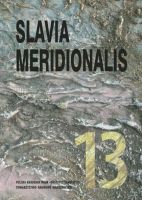Składniowy model synchronicznego opisu słowotwórstwa – podstawy i zastosowanie
A syntactical model of synchronic word formation description – basics and applied
Author(s): Viara MaldžievaSubject(s): Language and Literature Studies
Published by: Instytut Slawistyki Polskiej Akademii Nauk
Keywords: word formation; syntax; structural isomorphism; derivation
Summary/Abstract: This article attempts to briefly present the basic postulatess, their implications and the resulting opportunities for an approach to word formation, which is defined here as syntactic. It has been already tested in a confrontative description of Polish and Bulgarian word formation (Cf. V. Maldjieva, Słowotwórstwo. Gramatyka konfrontatywna bułgarskopolska, t. IX, Warszawa, 2009). The basic postulate is assumed to be the presence of a structural isomorphism between the language units sentence and lexeme, i.e. the same combinatorial rules license both the combinations of lexemes within the sentence and the combinations of morphemes within the lexeme. Another postulate, that is basic for the research, is the relative autonomy of the semantic and syntactic structures of the language units. In regard to word formation it means that, in this case semantic and formal derivatives should be distinguished in analogy to the sentence syntax, that distinguishes the concept structure (sentence) and formal structure (sentential expression).
Journal: Slavia Meridionalis
- Issue Year: 2013
- Issue No: 13
- Page Range: 19-39
- Page Count: 21
- Language: Polish

